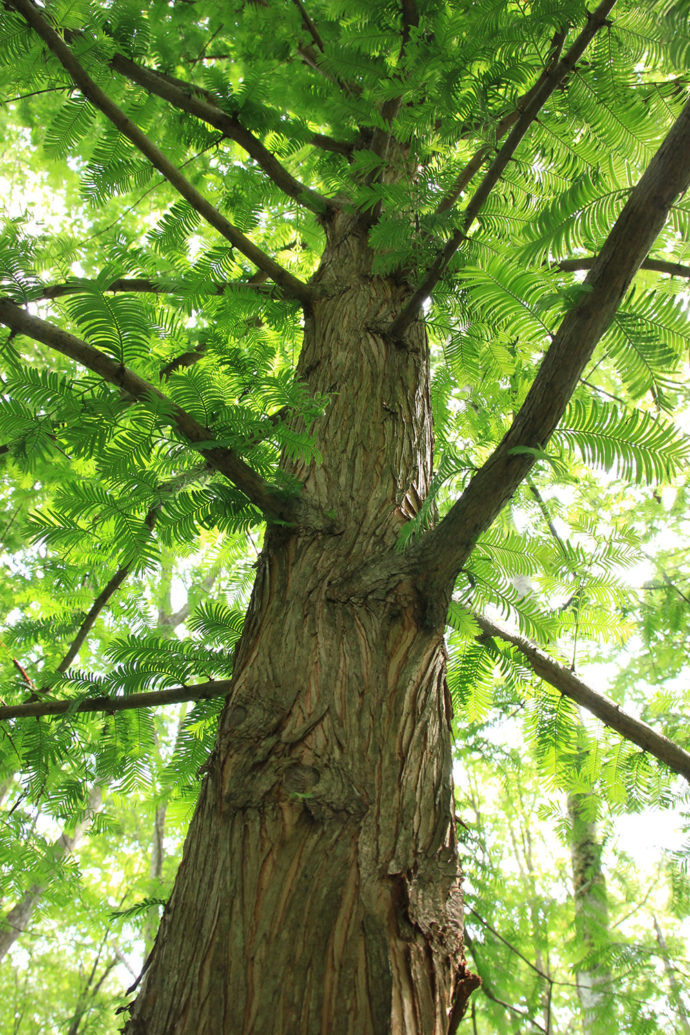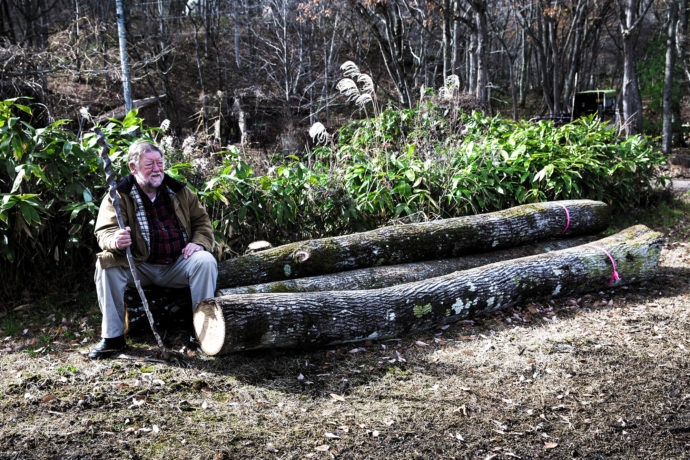Column
【赤鬼のつぶやき C.W.ニコル】 サンショウ(Japanese pepper tree/Zanthoxylum piperitum)
北長野で暮らすようになってから、季節が来ると森を散策しながら青ザンショウの実を摘むのが習慣になりました。サンショウの実をしばらく噛んでから冷たい湧水を飲むと、柑橘系のピリッとした刺激が水になんとも言えない風味を与えてくれるのです。私にとっては、まるでシャンパンのごとき甘美な味わいです。

サンショウは高さ3、4メートル程度の落葉低木で、葉柄から続く葉軸の左右に羽を広げたような小さな葉をつけます。日本料理に彩りを添える、おなじみの“つけ合わせ”です。英語では別名‘prickly ash’(トゲだらけのトネリコ)と言いますが、中にはほとんどトゲのないものもあります。また、サンショウには雄株と雌株があり、実を結ぶには両方が必要です。

サンショウは年に一度、萌木色の小さな花を咲かせます。それが食材としてもたいへんに風味豊かで、わが家では花の季節になると、サンショウの花を加えた特別なスキヤキを作ります。最高のごちそうです!

さて、2013年のこと、英国から甥のジェームス・ニコルが東京を訪れました。短い滞在でしたが、ふたりで会った際、甥は「ジン・ブーム」の到来を予言したのです。ジェームスは日本(と、そこに暮らす伯父)が大のお気に入りで、ジンに日本らしい独特の風味を加えるのに何かいい植物はないかと訊かれました。ジンづくりに欠かせないジュニパーベリーとの相性がよく、その風味を引き立ててくれるものでなければなりません。
私は、「ぜひ青ザンショウを試してごらん」と答えると、黒姫のアファンの森で摘んだサンショウの実をジェームスに託したのです。
その後2年ほど、何種類か香りのいいハーブの組み合わせを試してみて、遂に「ニコル家のジン」が完成しました。クラフトジン『こころ』として、ロンドンで醸造され、英国やヨーロッパなど世界各地で販売されています。
青ザンショウの実には、他の食材の風味を引き立てる不思議な力があるのです。この10年あまり、ヨーロッパの名だたるシェフが、実ザンショウを使って素晴らしい料理を生み出してきました。サンショウの実は、どんな食材とも合い、なんとアイスクリームにまで使われています!

日本では、いにしえの縄文時代(紀元前1万年~紀元前200年)から、サンショウは調味料や伝統薬として用いられてきました。日本では、葉や実だけでなくサンショウの木も、昔から食材をすりつぶす「すり鉢」や「すりこぎ」に使われてきました。
17世紀に韓国からサンショウの木が輸入され、兵庫県北部の但馬地域で栽培されるようになりました。今では、大粒の実と豊かな香りが特徴の「朝倉ザンショウ」として知られています。やがて明治時代(1868~1912年)に入り、日本でも大規模な生産が始まりました。この先、サンショウは世界中で広く使われるに違いありません。今こそ、日本におけるサンショウの木の栽培を改めて奨励するいい機会ではないでしょうか。
昨年、ある友人がブータンから持ち帰ったという乾燥実ザンショウを分けてくれました。日本のサンショウと似ていますが、得も言われぬ独特の風味があり、とても素晴らしいものでした! こうした新品種の栽培への取り組みは、食品やサプリメント、アロマオイルなどの分野で地方における新たな家内工業の可能性を開くものではないかと期待しています。
C.W.ニコル
2019年7月
写真提供:C.W.ニコル・アファンの森財団
Since living here in northern it became my custom, when walking in the woods, to pick a green sansho berry when in season, chew it for a while, then drink of cold mountain water. The citrus ‘zing’ of sansho imparts a special quality to the water which to me tastes almost like champagne.
The sansho is a small tree or shrub, reaching three, maybe four metres in height. It has small, pinnate compound leaves, well known in Japanese cooking as a garnish. Sansho also has thorns, (accounting for another name, ‘prickly ash’) although some sansho trees have few, if any prickles. Sansho has both male and female trees, so for berries, you need both.
The flowers are tiny, yellowish-green in colour. Once a year we have a great and special treat of sansho flowers in sukiyaki. Delicious!
In 2013 my nephew James Nicol came to Tokyo from Britain for a short visit. When I saw him he predicted a boom in gin. James is especially fond of Japan (and his old uncle) and asked me then if there was any typically Japanese aromatic that could be used along with the juniper berries that define the essence of gin making.
“Sure,” I said. “Green sansho.”
I got some of our fresh green sansho berries to James and after a couple of years of experiments with several kinds of aromatics this Nicol Family Sansho Gin is being distilled in London and marketed in the UK, Europe and other parts of the world as ‘Kokoro Gin’.
Green sansho berries have an almost magical ability to enhance other tastes. In the past decade or so sansho berries have been selected by some of Europe’s leading chefs to improve all kinds of foods, even ice cream!
Sansho has been used in Japan as a condiment and traditional medicine since ancient Jomon times (10000 – 200 B.C.)
In the 17th. century a Korean sansho trees were imported from Korea and cultivated in Asakura, Hyogo prefecture, for their large and fragrant berries. Larger-scale production of sansho began in Japan during the Meiji era (1868 – 1912). Surely the use of sansho will spread throughout the world and that now is a good time to encourage the spread of sansho trees in Japan.
Last year a friend gave me some dried sansho berries he brought home from Bhutan. They were fantastic! They were similar to Japanese sansho but had a special ‘zing’ of their own. I think that in the future it would be good to experiment with cultivars of sansho to create a new rural cottage industry for food, medical supplements and aroma oils.
Sansho wood is traditionally used in Japan to make pestles and mortars for grinding food.
C.W.Nicol
July . 2019
C.W.ニコル
作家・1940年イギリス南ウェールズ生まれ。1995年日本国籍取得。カナダ水産調査局北極生物研究所の技官・環境局の環境問題緊急対策官やエチオピアのシミエン山岳国立公園の公園長など世界各地で環境保護活動を行い、1980年から長野県在住。1984年から荒れ果てた里山を購入し「アファンの森」と名づけ、森の再生活動を始める。2005年、その活動が認められエリザベス女王から名誉大英勲章を賜る。2011年、2016年に天皇、皇后両陛下がアファンの森をご視察された。






